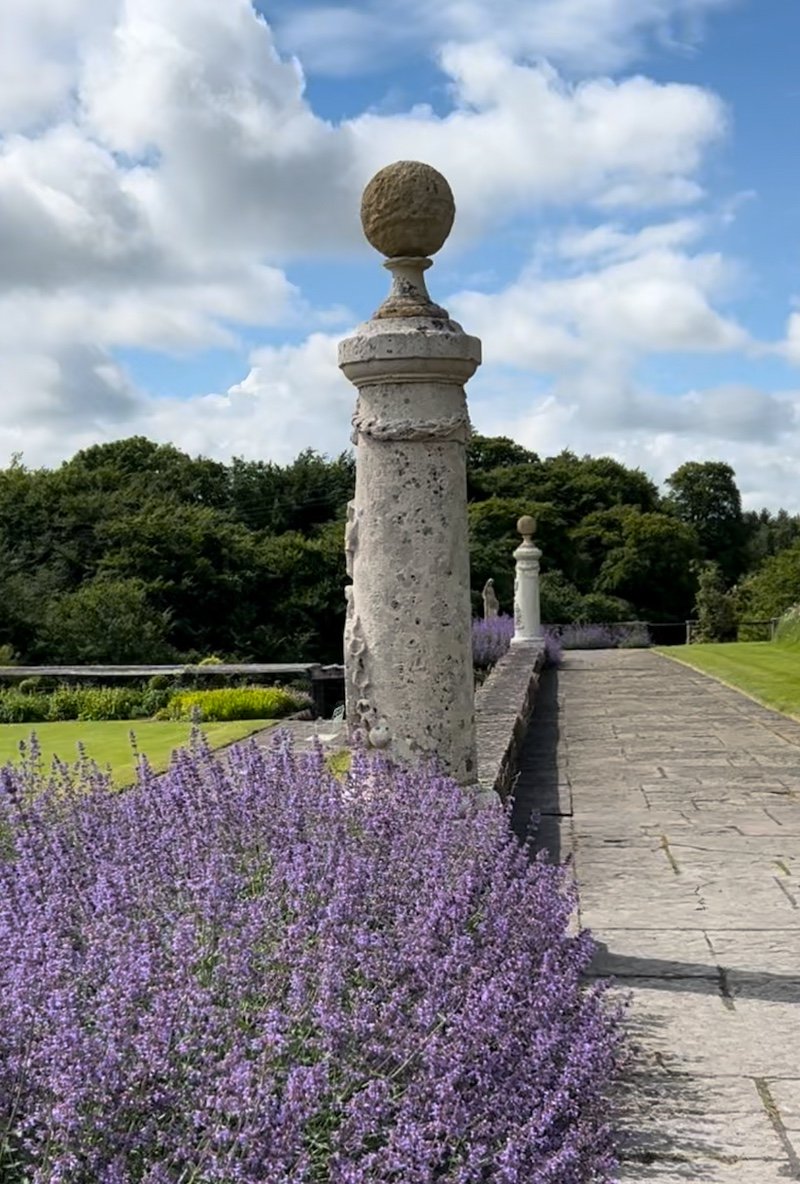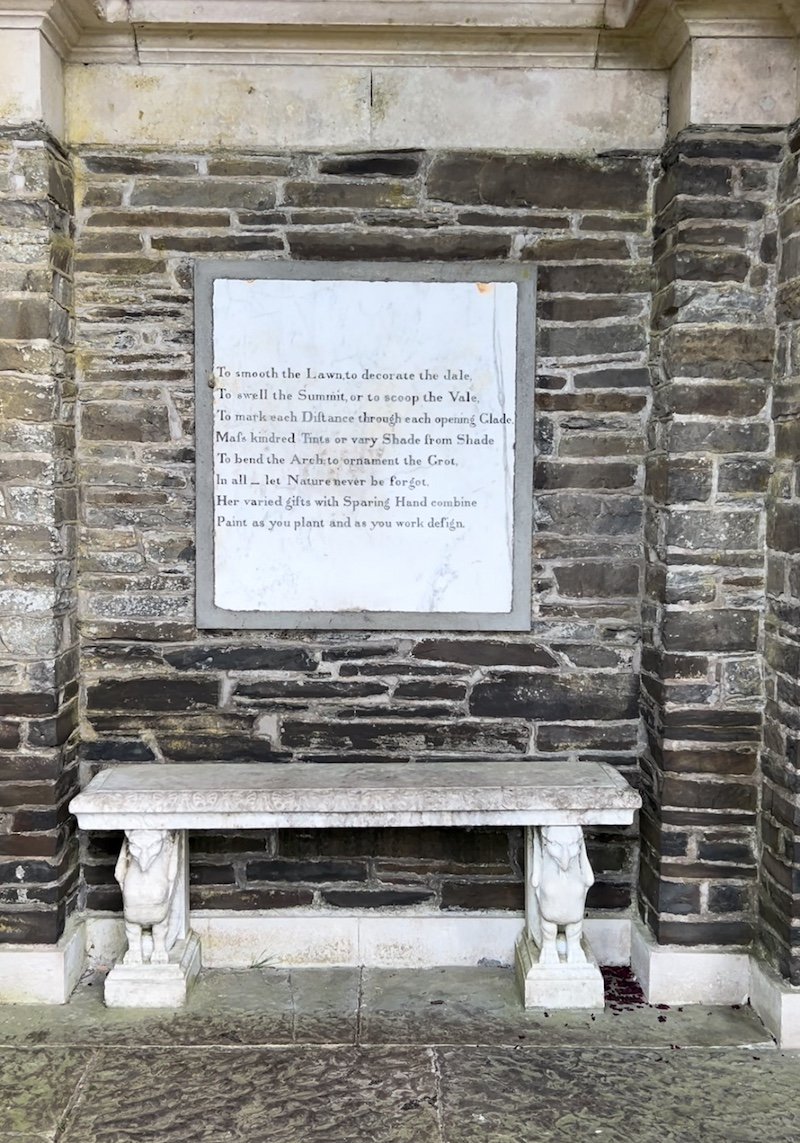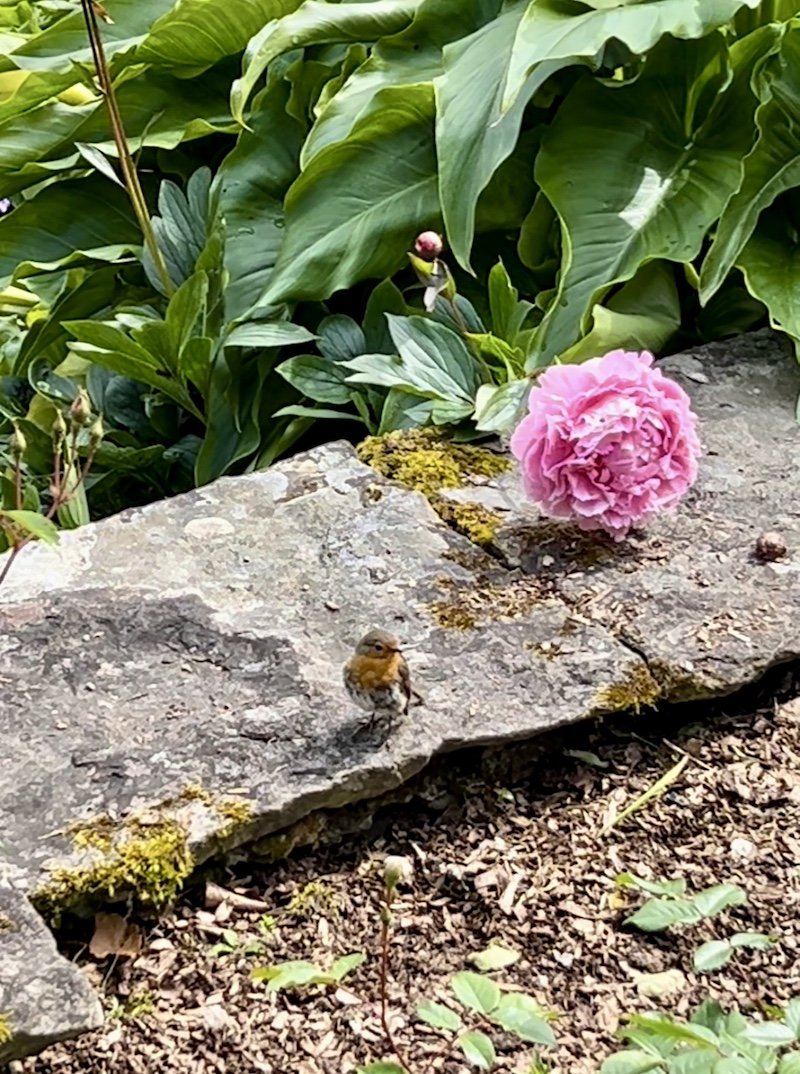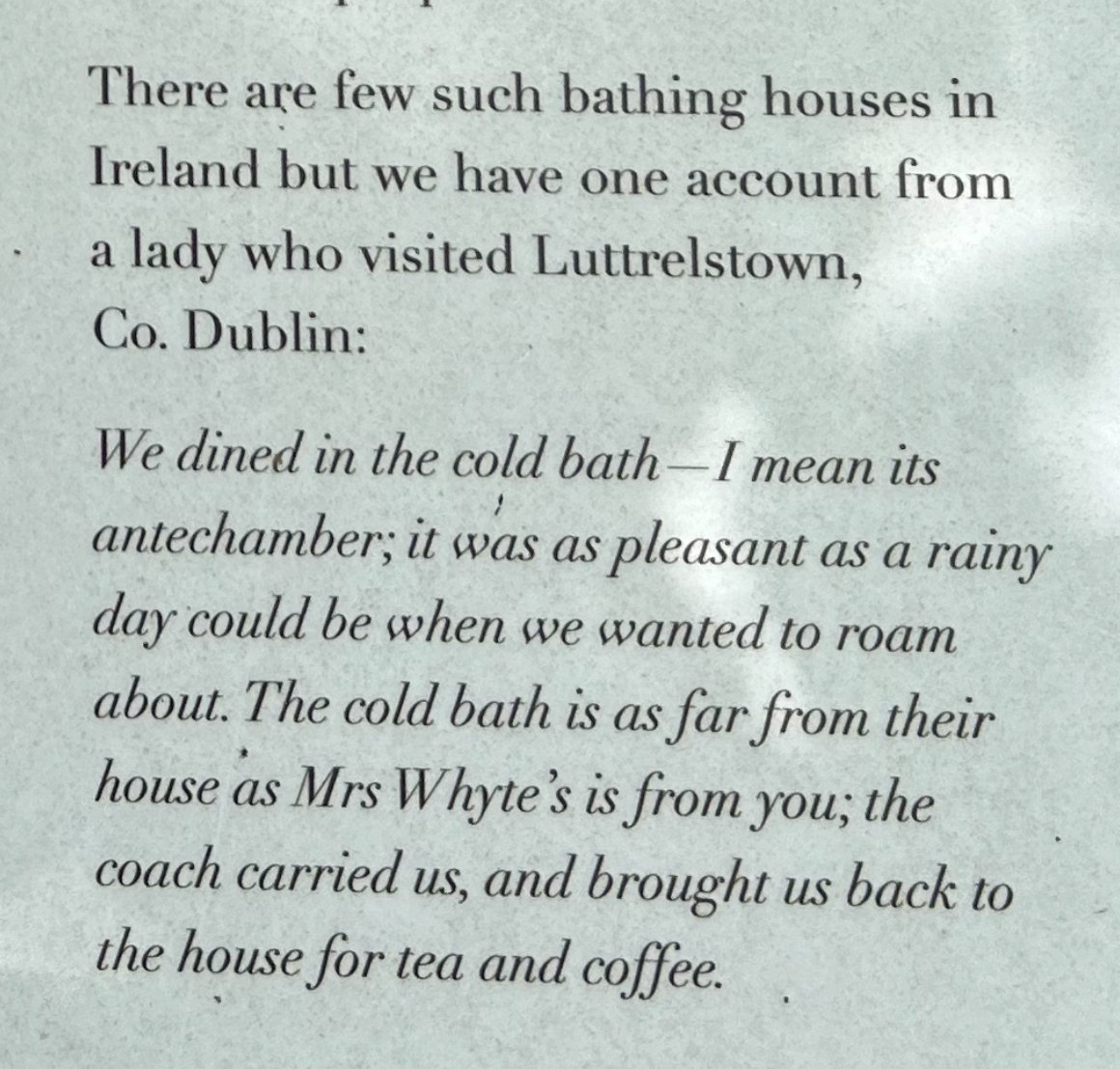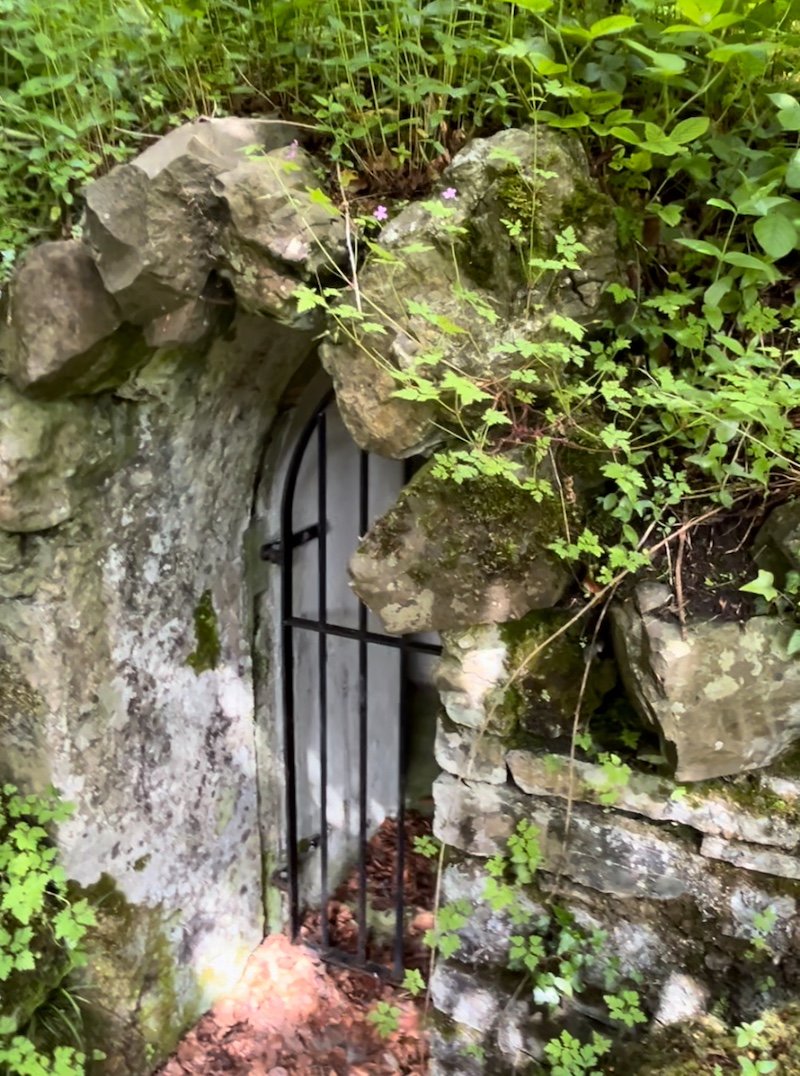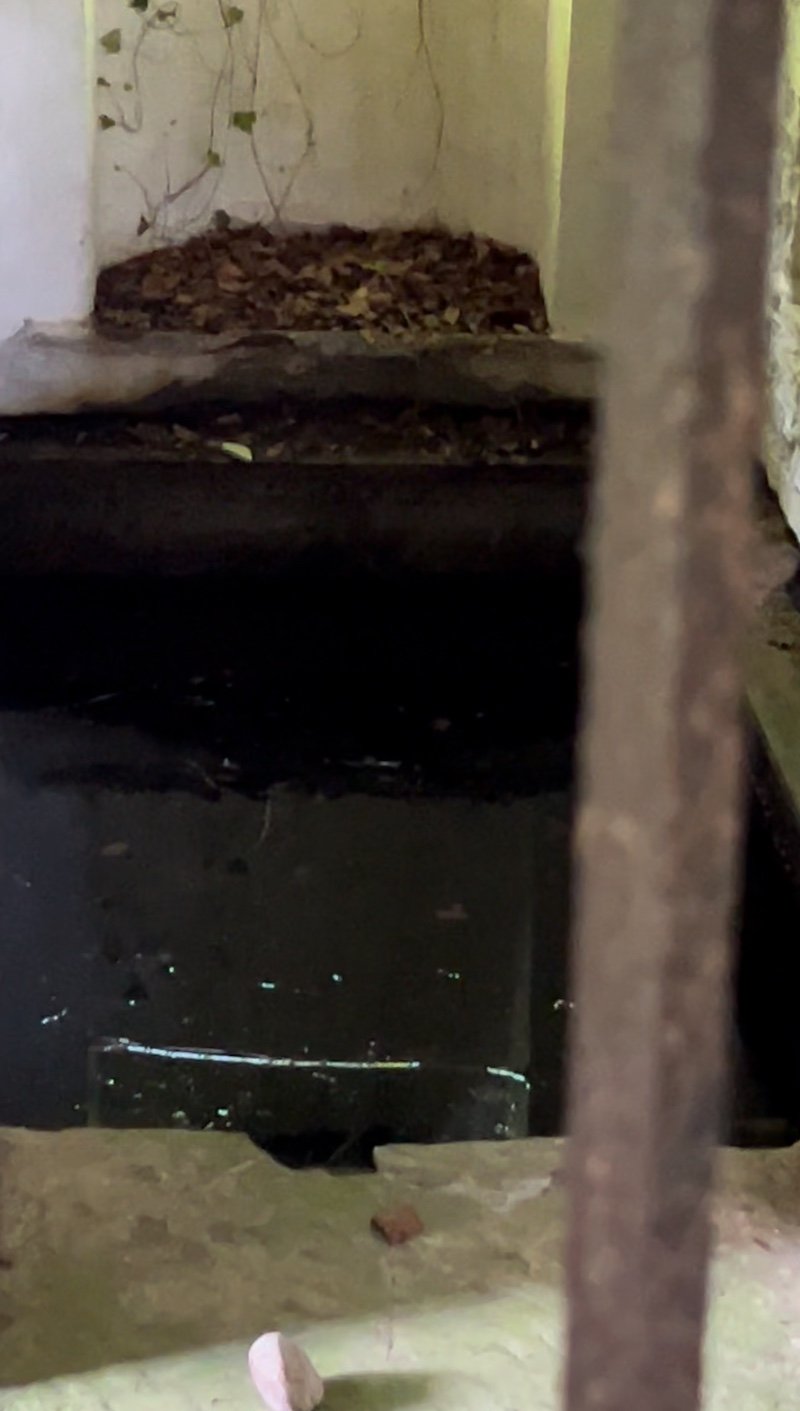On a recent visit to an old estate in County Laois, I was excited to find something very rare in Ireland: an old bathing house. Mr Winterly and I took advantage of a recent dry Sunday to visit Heywood Gardens in County Laois. The bathing house is set into the hillside down by the lake but the small and elegant landscaped garden was designed by the famous Sir Edwin Lutyens, and is one of only a handful he completed in Ireland. He also created the War Memorial Gardens in Dublin. In England, he was known for his garden collaborations with the legendary plants person, Gertrude Jekyll.
Early days at Heywood
The property at Heywood goes back to the 1700s when it was owned by a gentleman called Frederick Trench and, in those days, it was quite a simple Georgian dwelling. Fast forward to the Victorian era when Colonel Hutcheson Poe extended the house on either side with sizeable wings, and major work was done on the garden. Set on the side of a hill and looking across the countryside to the village of Ballinakill, some claim that Heywood is one of the foremost romantic gardens of its time, with man-made lakes, the Lutyens sunken garden and loggia, and the bathing house; the latter very rare in Ireland.
Heywood House was a victim of a fire
Unfortunately the house burnt down in the 1950s and now there's a community school on the grounds. It’s a fine setting for a school but a shame about the loss of the house. I’ve seen photographs of the property displayed on boards by the OPW, which show what it once looked like.
The pleached lime walk at Heywood which leads from the sunken garden designed by Sir Edwin Lutyens. (Photo: Suzanne Winterly)
Catmint flanks one of the stone pillars along the broad terrace at Heywood Gardens. (Photo: Suzanne Winterly)
There's a short path flanked by pleached limes (a feature much loved in France) on the way into the Lutyens’ garden, where the tall gates also display a French influence. A large fountain forms the centrepiece in the sunken garden with sculptures of little turtles around it. Steps lead up to the loggia and, under cover, a tablet of poetry. I once dreamed of putting words by T S Eliot on a paving stone in our garden, one of my more romantic notions decades ago, but it never happened.
Inside the loggia in the Edwin Lutyens’ garden at Heywood is a stone slab inscribed with a verse of poetry. (Photo: Suzanne Winterly)
The Office of Public Works (OPW) looks after the grounds for the Irish State and the planting had definitely improved since our last visit some years ago. I found this fearless young robin among the peonies, still wearing some of his juvenile feathers.
I met this young fearless robin in the sunken garden when it hopped around at my feet.
Video of the old Bathing House at Heywood
Video of the Bathing House at Heywood Gardens, which is built into the hillside and fed by a natural spring. (Suzanne Winterly)
The Bathing House down by the lake
As is the fashion these days, the grass on the hillside below the terraces has been left to grow long, through which runs a mown path that led us down to a lake filled with lily pads. They aren’t flowering yet but will probably look spectacular when they do.
Much to my excitement, I discovered what I thought was an ice house built into a hill near the lake but, when I read the OPW sign nearby, I realized it was a rare bathing house. Comprising of two chambers, one for dressing and one containing a plunge pool fed by a spring in the hillside, it’s a natural design built out of the rocks. Obviously the door and windows are barred nowadays to keep people out because it would be dangerous if a child fell into the pool. I was fascinated by this bathing house and couldn't resist peeping in the windows to see what was inside.
The approach to the Bathing House at Heywood, which is set into the hillside, built of rock and fed with a natural spring. (Photo: Suzanne Winterly)
In the photograph, you can see the first chamber with the chair and then the pool off that, which is still full of water. I’m sure it was clean once upon a time but it is now full of dark brown water, which I wouldn't fancy getting into.
Similar to modern plunge pools, I imagine it would have been very cold but considered refreshing. The Victorians believed in cold water therapies as a health feature. Sea swimming and spas were popular. Such bathing houses were very rare in Ireland but you can read below about a woman who visited one in Luttrelstown on a wet summer day. One thing never changes throughout the centuries – the Irish weather.
Heywood has a dramatic arched front entrance, in the Gothic Revival style, and is an inspiring place for a walk with many of the paths leading through the woodland. There's also an extraordinary Gothic folly on the avenue of a ruined window and faux castle. A stone seat inside the window looks down to the lake and the castle has little rooms. It was used by the family for tea parties and for entertaining their guests. I imagine the children must have loved playing there.
If you find yourself in County Laois, I’d recommend visiting Heywood. It’s not far off the main Dublin to Cork road and the good news is entrance is free. A great place for a picnic!
I hope to go back again to discover more of its secrets.
The door into the bathing house at Heywood. (Photo: Suzanne Winterly)
The plunge pool in the second chamber of the Bathing House (Photo: Suzanne Winterly)
Suzanne Winterly is the author of mystery and dual timeline historical mystery novels set in the late 19th century and in the present. More details below:
For more about books, stories and photographs, author research, history and gardening, join Suzanne’s newsletter here:


